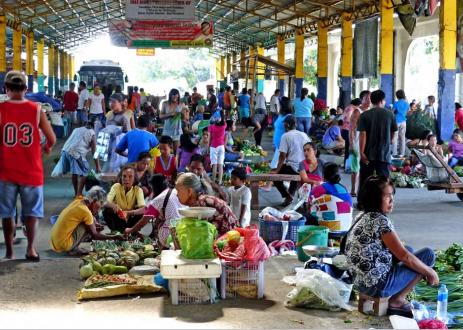Achieving Replacement Level Fertility
Creating a Sustainable Food Future, Installment Three

概要
联合国预测,世界人口将从2012年的70亿超过70亿升至2050年。本文研究了全球人口挑战的性质,人口增长对撒哈拉以南非洲粮食需求的影响以及在粮食安全,经济增长和环境方面,潜在的好处比目前预期的更快地降低了生育水平。然后,本文探讨了降低生育率的有前途的非强制性方法。
This is the third installment in the series that forms the foundation of the “World Resources Report 2013-14: Creating a Sustainable Food Future.”
Executive Summary
全球人口将从2012年的70亿超过70亿增加到2050年的近96亿。世界上大多数地区已经取得了成就或接近替代水平的生育能力。“替代水平的生育能力”是总生育率(每个女性出生的儿童的平均数量),该人口完全取代了一代人,而无需移民。对于大多数国家,该率约为每个女性的2.1名儿童,尽管死亡率可能适度变化。
Sub-Saharan Africa is the exception to this fertility trend. Its total fertility rate was 5.4 during the 2005–10 period― double that of any other region―and is projected to decline only to 3.2 by 2050. These expected reductions in fertility rates reflect expectations of increasing urbanization, expected declines in child mortality, and increases in income, among other factors. This total fertility rate trajectory will result in a population increase of 1.2 billion people in Sub-Saharan Africa from 2012 to 2050. This increase will more than double the region’s current population of 0.9 billion to 2.1 billion by 2050, and quadruple it to 3.9 billion by 2100, according to the Population Division of the United Nations Department of Economic and Social Affairs (UNDESA). The region’s projected growth in population will account for half of the planet’s population growth between 2012 and 2050.
预计人口的增加对撒哈拉以南非洲人民构成了粮食安全挑战。该地区已经是世界上最饥饿的地方。根据联合国粮食和农业组织(FAO)的数据,撒哈拉以南非洲的人口中有27%的人营养不良,而美国农业部的一项研究估计,它是世界上饥饿的44%的家园。该地区目前的农作物产量最低,谷物收益率为每年1.5吨,每年是世界平均水平的一半。大部分土壤具有较低的碳含量,并耗尽了养分。
Sub-Saharan Africa could reduce the challenge of feeding its population if it were to achieve the replacement level fertility of 2.1 by 2050. Doing so would require a reduction in the region’s average total fertility rate at a faster pace than currently projected. According to analysis conducted for this working paper by the Oxford Institute of Population Ageing, such a reduction would result in a Sub-Saharan African population of 1.76 billion by 2050—roughly 390 million less than UNDESA’s most recent medium fertility scenario projection for 2050.
到2050年,在撒哈拉以南非洲的替代水平生育能力(并确保在其他地区预计)可以产生许多好处。到本世纪中叶,每年将食物需求减少约600万亿公斤(KCAL),在2006年与2050年之间的食物之间每年6500万亿kcal的全球差距中约为9%。of the projected gap in Sub-Saharan Africa’s crop production for that period by approximately one quarter. The region already relies on imports for roughly 20 percent of its staple crops, so closing this food gap would significantly contribute to food security.
Reducing fertility rates could also lead to economic benefits through a “demographic dividend.” During and after a rapid decline in fertility, a country simultaneously has fewer children to care for and a greater share of its population in the most economically productive age bracket. Researchers estimate that this demographic shift was responsible for up to one third of the economic growth of the East Asian “Tigers” between 1965 and 1990. Furthermore, achieving replacement fertility would reduce agriculture’s impact on the environment. Based on FAO projections for yield gains in the region, Sub-Saharan Africa will need to add more than 125 million hectares of cropland from 2006 levels to meet the region’s projected crop needs in 2050. Achieving replacement level fertility would cut needed cropland expansion by one third, potentially sparing an area of forest and savannah larger than Germany from conversion. This sparing would reduce the carbon emissions that would have resulted from that conversion. A reasonable value for this reduction to the world would be US$400 billion to US$1 trillion, based on alternative mitigation costs of US$25 to US$60 per ton of carbon dioxide.
Fortunately, the most effective approaches to achieving replacement level fertility are non-coercive, save millions of lives, advance gender equity, give people more control over their lives, and contribute to economic growth. These approaches focus on increasing educational opportunities for girls; increasing access to reproductive health services, including family planning; and reducing infant and child mortality.
在大多数国家,国家政府控制,资助和制定教育系统和卫生服务的政策。因此,追求上述方法达到替代水平生育能力的方法是国家政府的责任。但是,双边和多边发展机构也可以通过支持五岁以下儿童的教育,生殖健康服务以及营养和预防保健服务的计划来发挥作用。民间社会组织也可以通过提高认识,创造资源,提供服务和监视绩效来提供帮助。
The most recent population data find that Sub-Saharan African fertility rates have not been declining as rapidly as anticipated by previous UNDESA projections. Yet countries such as Botswana and Rwanda have demonstrated that enormous progress is possible. Achieving replacement level fertility in Sub-Saharan Africa and elsewhere by 2050 is a multi-win solution to humanitarian, economic, and environmental challenges, and an important item on the menu for a sustainable food future.
Projects
-

World Resources Report
访问项目The World Resources Report is the flagship publication of World Resources Institute.
Part of Cities

